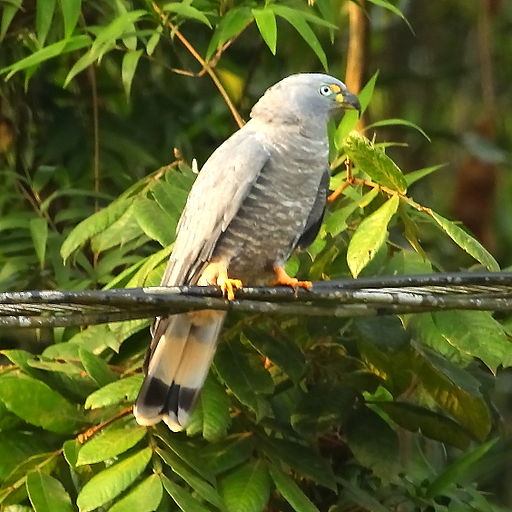Superregnum: Eukaryota
Cladus: Unikonta
Cladus: Opisthokonta
Cladus: Holozoa
Regnum: Animalia
Subregnum: Eumetazoa
Cladus: Bilateria
Cladus: Nephrozoa
Superphylum: Deuterostomia
Phylum: Chordata
Subphylum: Vertebrata
Infraphylum: Gnathostomata
Megaclassis: Osteichthyes
Cladus: Sarcopterygii
Cladus: Rhipidistia
Cladus: Tetrapodomorpha
Cladus: Eotetrapodiformes
Cladus: Elpistostegalia
Superclassis: Tetrapoda
Cladus: Reptiliomorpha
Cladus: Amniota
Classis: Reptilia
Cladus: Eureptilia
Cladus: Romeriida
Subclassis: Diapsida
Cladus: Sauria
Infraclassis: Archosauromorpha
Cladus: Crurotarsi
Divisio: Archosauria
Cladus: Avemetatarsalia
Cladus: Ornithodira
Subtaxon: Dinosauromorpha
Cladus: Dinosauriformes
Cladus: Dracohors
Cladus: Dinosauria
Ordo: Saurischia
Cladus: Eusaurischia
Subordo: Theropoda
Cladus: Neotheropoda
Cladus: Averostra
Cladus: Tetanurae
Cladus: Avetheropoda
Cladus: Coelurosauria
Cladus: Tyrannoraptora
Cladus: Maniraptoromorpha
Cladus: Maniraptoriformes
Cladus: Maniraptora
Cladus: Pennaraptora
Cladus: Paraves
Cladus: Eumaniraptora
Cladus: Avialae
Infraclassis: Aves
Cladus: Euavialae
Cladus: Avebrevicauda
Cladus: Pygostylia
Cladus: Ornithothoraces
Cladus: Ornithuromorpha
Cladus: Carinatae
Parvclassis: Neornithes
Cohors: Neognathae
Cladus: Neoaves
Ordo: Accipitriformes
Familia: Accipitridae
Subfamilia: Perninae
Genus: Chondrohierax
Species: Chondrohierax uncinatus
Subspecies: C. u. aquilonis – C. u. mirus – C. u. uncinatus
Name
Chondrohierax uncinatus (Temminck, 1822)
References
Nouveau recueil de planches coloriées d'oiseaux livr.18 pl.103,104
Listed animal in CITES Appendix I
Vernacular names
čeština: Luňákovec hákozobý
English: Hook-billed Kite
español: Milano de pico de garfio
suomi: Väkänokkahaukka
The hook-billed kite (Chondrohierax uncinatus), is a bird of prey in the family Accipitridae, which also includes many other diurnal raptors such as kites, eagles, and harriers. It occurs in the Americas, including the Rio Grande Valley of Texas in the United States, Mexico, the Caribbean, Central America, and tropical South America.
It is a mid-sized, slender raptor with an invariably striped belly and banded tail but there is probably more individual variation in color and in size of bill than in any other species of diurnal raptor. Birds from beneath can look blackish or gray (especially males) and brown or brick-red (females) variously. This renders species identification at times extremely difficult. The downcurved hook at the tip of the beak is apparent on perched and low-flying birds. Weight can range from 215 to 397 g (7.6 to 14.0 oz) and length is 38–51 cm (15–20 in).[3][4]
Tree snails are a vital component of the hook-billed kite’s diet. The density of their population within a region is proportional to the presence of tree snails. It has also been observed that the beak of the hook-billed kite has adapted in size and shape between different regions of their territory in response to the species of tree snail available to them.[5] However, frogs, salamanders, small mammals and insects are also taken. When it finds a tree snail it holds it with its talon and uses its beak to pry open the shell. The nest, a flimsy platform of sticks, is built by both sexes. The hook-billed kite lays two to three buff-white eggs marked with red-brown. Incubation is by both sexes. Semialtricial young stay in the nest 35–45 days and are fed by both sexes. This raptor is often considered sluggish and retiring, preferring to perch inside leafy canopy when not flying.
The critically endangered Cuban kite, C. wilsonii, is considered by some authors to be a subspecies of the hook-billed kite.
References
BirdLife International (2020). "Chondrohierax uncinatus". IUCN Red List of Threatened Species. 2020: e.T22694971A168997614. doi:10.2305/IUCN.UK.2020-3.RLTS.T22694971A168997614.en. Retrieved 11 November 2021.
Gill F, D Donsker & P Rasmussen (Eds). 2020. IOC World Bird List (v10.2). doi : 10.14344/IOC.ML.10.2.
Marshall Cavendish Corporation (2001): Endangered Wildlife and Plants of the World on Google Books
[1][dead link]
Dunne, Pete (2012). Hawks in flight : the flight identification of North American raptors (2nd ed.). Boston: Houghton Mifflin Harcourt. p. 301. ISBN 978-0-395-70959-7.
Retrieved from "http://en.wikipedia.org/"
All text is available under the terms of the GNU Free Documentation License


